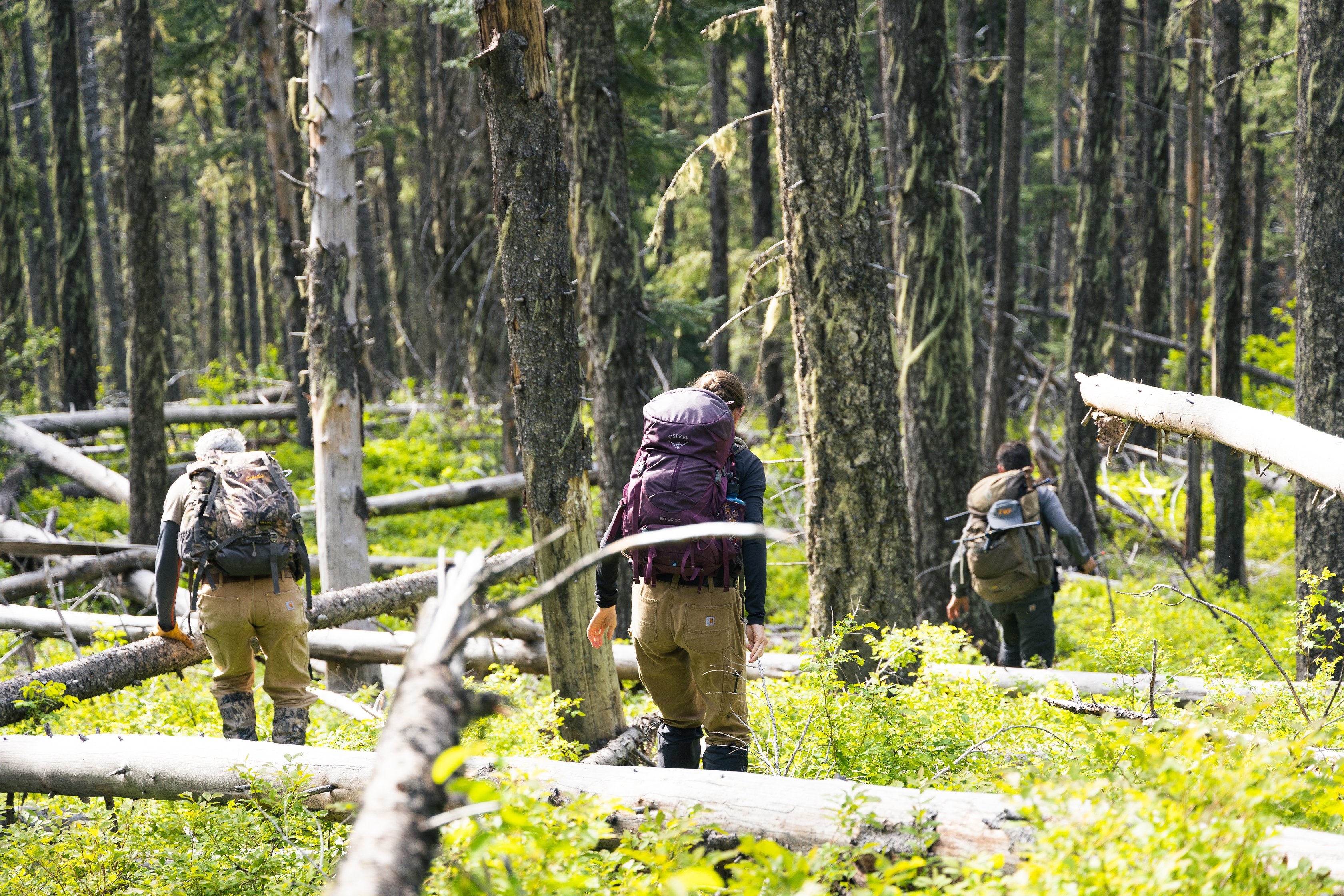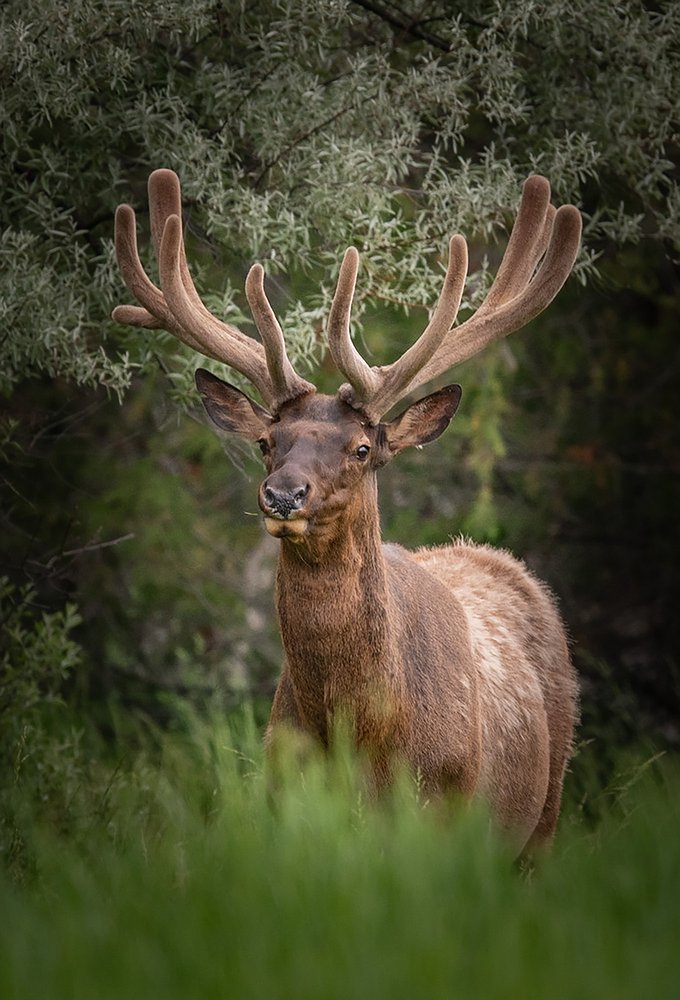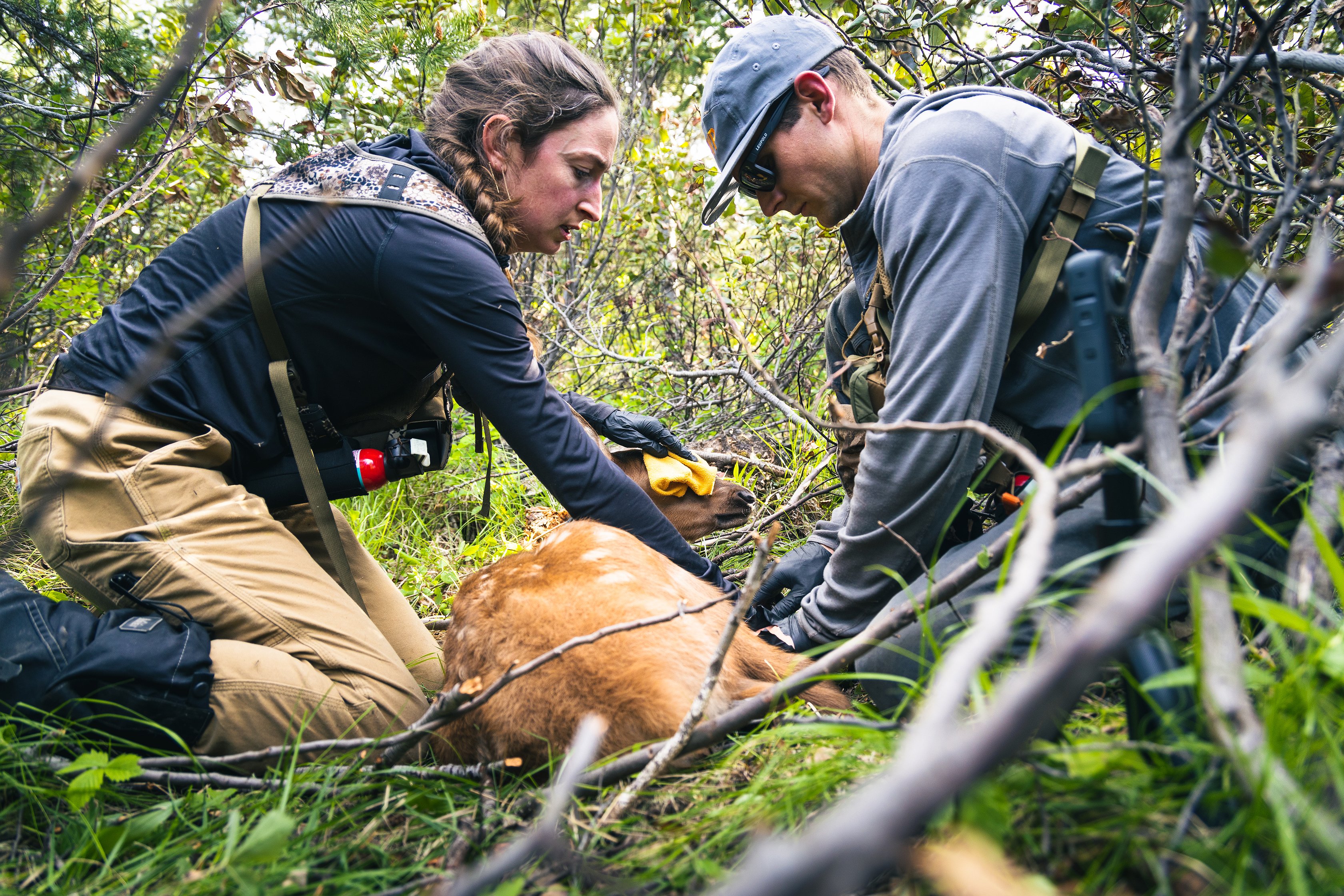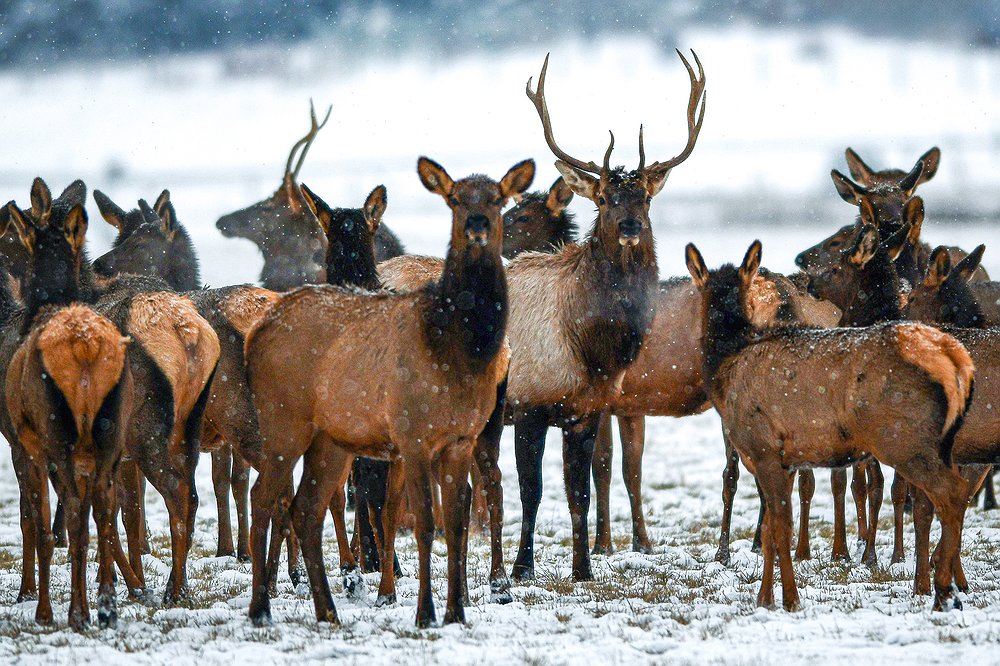Description
A flick of an ear, the flash of a dark wet eye. A tawny hide, quivering with an impulse for movement.
Researchers searched the dense underbrush for any sign of the newborn elk calf. It was important they find the young animal in the next 72 hours, before it gained full use of its gangly legs and the window for safe capture closed.
A helicopter beat overhead, but even with the advantage of a bird’s eye view, the task was akin to finding a needle in a haystack — or in this case an elk in the dense forest.
“That’s their whole game, staying camouflaged and hidden,” said Zack Farley, a wildlife biologist for Montana Fish, Wildlife and Parks.
Luckily, Farley is somewhat of a professional hide-and-seeker himself. As the agency’s elk species lead for Region 1, which encompasses Lincoln, Flathead, Lake and Sanders counties, he has helped capture and collar hundreds of elk as part of an ongoing effort to better understand the enigmatic creatures and solve a decades-old mystery.
Between 2006 and 2023, the annual harvest of elk in Region 1 plummeted from over 2,220 elk to a mere 980. The precipitous drop alarmed many hunters and wildlife enthusiasts and raised questions for wildlife biologists.
Figuring out why hunters were having less success would be far from an easy task. Any number of factors could be at play, from yearly weather patterns to predators to disease.
The landscape of northwestern Montana posed another challenge. In most of the state, biologists conduct annual aerial surveys to estimate elk populations, but the department halted these efforts in 11 of the 15 hunting districts in the region because dense forests made spotting and counting elk so difficult.
“We had to figure out the next best thing,” said Farley.
IN DECEMBER 2022, Farley joined forces with other state wildlife officials and researchers and students from the University of Montana to devise a new strategy for surveying and managing elk in northwestern Montana.
They decided to focus on Hunting District 121 in Sanders County, which boasts one of the largest elk populations in the region. It is also one of the few districts in Region 1 where aerial surveys are still conducted, so researchers would be able to compare the results of the project with a standard baseline.
The team planned to use a suite of well-tested methods, including camera traps, GPS radio collars and fecal samples, to gather key insights into how factors like predator abundance, migratory movements and calf survival rates affect the district’s overall elk population. Eventually, that data would be channeled into a comprehensive adaptive management program that biologists across Region 1 could use to better predict fluctuations in elk populations.
“What we’re really hoping for is, if we can find out what the drivers are here in 121, we can apply that elsewhere,” said Farley.
That winter, the group made several trips into nearby forests to recruit their first research subjects, using mesh-sided enclosures called clover traps. When an elk entered the trap to reach a waiting pile of alfalfa, a trip wire caused a door to swing over the entrance, sealing the elk inside. Once on the scene, researchers sedated the elk.
They recorded the elk’s measurements, withdrew a vial of blood to test for diseases and extracted a tooth to determine the elk’s age. Each elk then received a GPS radio collar, pre-set to send location data to researchers at regular intervals.
Since beginning the study, researchers have captured and collared 248 elk, including 125 cows, five bulls and 27 six-month-old calves. The other 91 were newborns.
When researchers captured a pregnant elk, they implanted a photosensitive transmitter into the animal’s vaginal tract. When the elk gave birth a few months later, the tracker was also expelled. Once exposed to sunlight, the device sent a notification to researchers, allowing them to quickly locate the newborn calf and attach a special radio collar that will expand as it grows.
In spring 2023, researchers also set up 119 camera traps. Each one is rigged to snap a photo every 10 minutes and can also be triggered by motion, resulting in over 17,000 snapshots every day.
Fecal samples provided a final avenue for biologists to learn about Region 1’s elk through the food they eat. Researchers worked backwards, using DNA analysis to identify the plant species present in each sample and then combining the results to map out the typical elk’s diet at different times of year. They also surveyed vegetation across the district to determine how changes to the landscape impact the plants elk rely on.
THE RESEARCH team is still sifting through the unprecedented amount of data produced in the study's first two years, but they are starting to gain some clearer insights into the mysterious drop in harvest numbers.
While the overall population seems healthy and stable, there are some indications that the number of bull elk may have declined in recent decades. Farley said the potential decrease in bull elk is not a problem from an ecological perspective — the hunting district’s pregnancy rates remain high — but it does pose a “social issue.”
“We’re meeting the baseline population goal at a biological level, but if we move to the social aspect, hunters clearly want more bulls,” said Farley.
In a 2023 survey from Montana Fish, Wildlife and Parks, over 75% of Region 1 hunters said there were too few bull elk in the region. When asked about mature bull elk, that percentage rose to 83%.
Increasing the number of bull elk would likely mean restricting hunting opportunities, an option that the region’s hunters have so far been largely opposed to, and Farley said the research team is not ready to fully rule out any other factors.
In Hunting District 121, researchers plan to collar a final cohort of newborn elk this spring, with the goal of continuing to analyze GPS data through 2027, and studies in other parts of the region are also contributing to the department’s growing knowledge base.
“I’m definitely optimistic,” said Farley. “I think it’s a really exciting time. We have a lot of research going on in Region 1. I’m not saying it will give us all the answers, but I think it will give us a lot of good information.”
In February, Farley joined a group of state wildlife officials on a collaring expedition in the Bob Marshall Wilderness Complex. Because mechanized travel in the wilderness is typically not permitted, the group skied over 30 miles to reach Big Prairie Ranger Station, where a cache of supplies packed in during the summer was waiting. Unfortunately, the crew’s clover traps remained empty, and the group skied back out a few weeks later without collaring any elk.
That is just how it goes sometimes, said Farley. He is already looking forward to next winter, when the team plans to once again venture out in the hopes of better understanding the intricate lives of the Montana’s elk.
Reporter Hailey Smalley can be reached at [email protected] or 758-4433.
 A bull elk walks across an open field to meet up with the rest of the herd in Creston on Friday, March 15. (Casey Kreider/Daily Inter Lake)
A bull elk walks across an open field to meet up with the rest of the herd in Creston on Friday, March 15. (Casey Kreider/Daily Inter Lake)
Casey Kreider
 Researchers search for an elk calf near Pilgrim Creek in Sanders County. (MT Fish, Wildlife and Parks)
Researchers search for an elk calf near Pilgrim Creek in Sanders County. (MT Fish, Wildlife and Parks)
News Source : https://dailyinterlake.com/news/2025/apr/06/researchers-seek-answers-in-the-case-of-nw-montanas-disappearing-elk/
Other Related News
06/23/2025
Access to Logan Pass on Glacier National Parks Going-to-the-Sun Road remained closed Sund...
06/22/2025
If you cant give a million be part of a million that gives says Elizabeth Wood the former...
06/22/2025
Whitefish School Districts end-of-year enrollment numbers have held steady for the last f...
06/22/2025
High in the Candian Rockies a trickle of water emerges from the blue underbelly of an anc...
06/22/2025
















